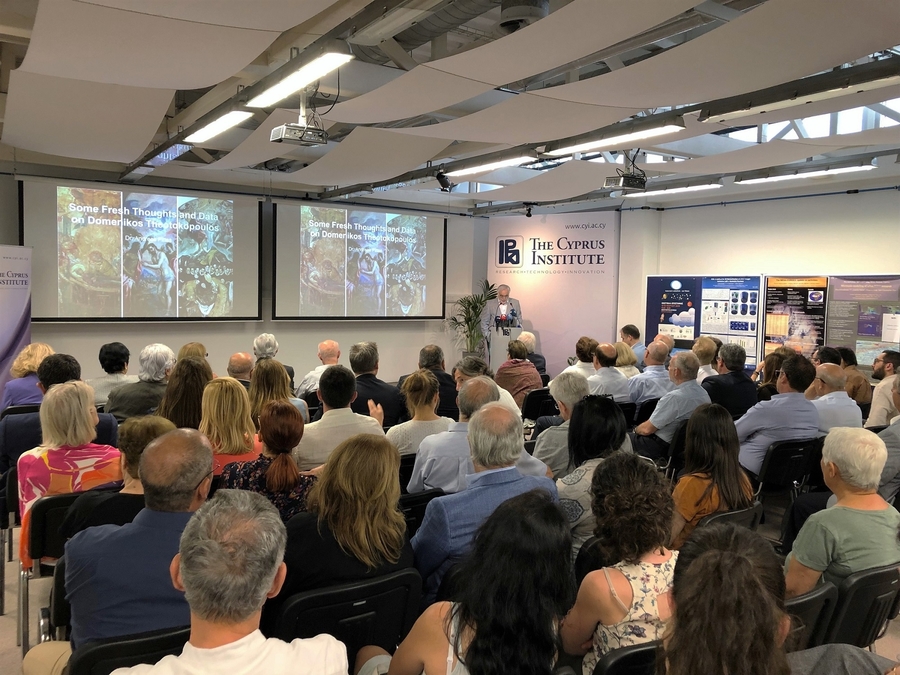On Wednesday, June 6th 2019, Dr. Andreas Pittas, Founder and Executive Chairman of Medochemie and Chair of the Executive Committee of the Cyprus Research and Educational Foundation (CREF), made a colloquium on "Some Fresh Thoughts and Data on Domenikos Theotokopoulos". The event took place at the Novel Technologies Laboratory of the Cyprus Institute, in Athalassa Campus.
Domenikos Theotokopoulos, widely known as “El Greco”, is considered one of the most important and influential artists in world history.
Dr. Pittas focused on recent archival discoveries and studies of the social and family circles of El Greco, which brought to light unknown details of his life, that contributed to a revised understanding of his art and personality. He also provided a broad overview of the life and career of the important artist, who, according to Dr Pittas, travelled, evolved and transformed artistically between Crete, Italy and Spain.

The devoted scholar of El Greco, Dr. Andreas Pittas, made special reference to some of the most iconic works of the great painter, representative of his artistic genius and characteristics of his sense of cultural identity. At the same time, he highlighted aspects of the technique and style of the great artist, resulting from the technical imaging and physico-chemical analysis of selected works by El Greco, carried out at the Andreas Pittas Art Characterization Laboratories of the Science and Technology in Archaeology and Culture Research Center (STARC) of the Cyprus Institute.
The technology of the Art Characterization Laboratories, Dr. Pittas noted, has been used in the scientific analysis of works of art and archaeological objects. In specific, technical and spectral photographic applications as well as digital three-dimensional recording have allowed in-depth study of the techniques used by artists such as El Greco, he added. In the Laboratories, we have developed and implemented the necessary methodology to record and understand interventions, repairs and maintenance of works of art with great success, Dr. Pittas mentioned, highlighting that the development of non-destructive analysis applications has yielded impressive results with regard to the materials and dyes used by past artists.